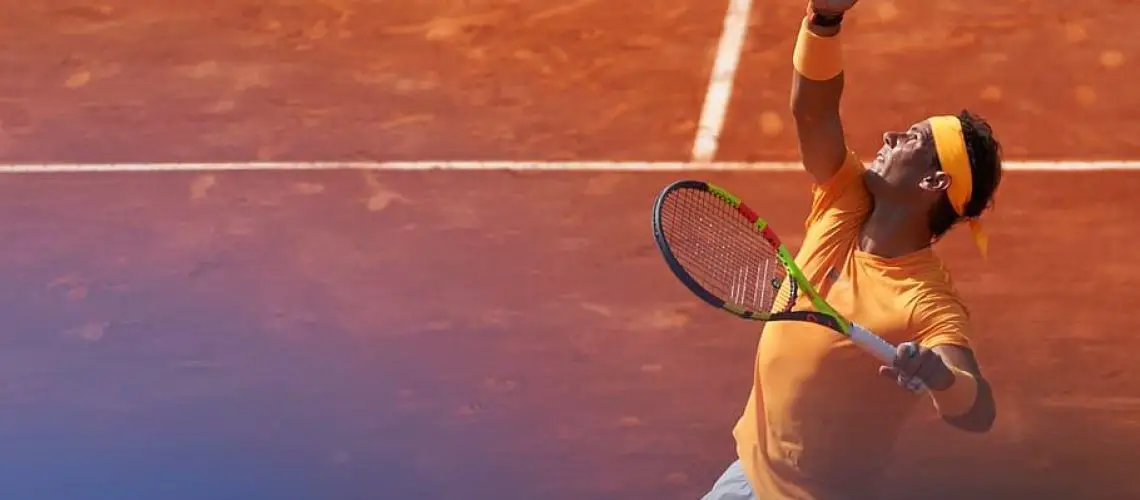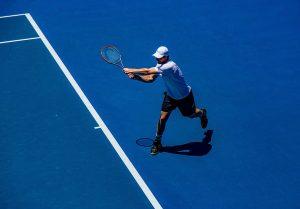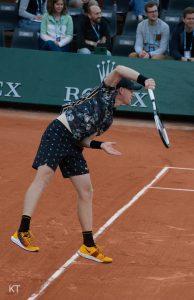We may earn money or products from the companies mentioned in this post.
Introduction
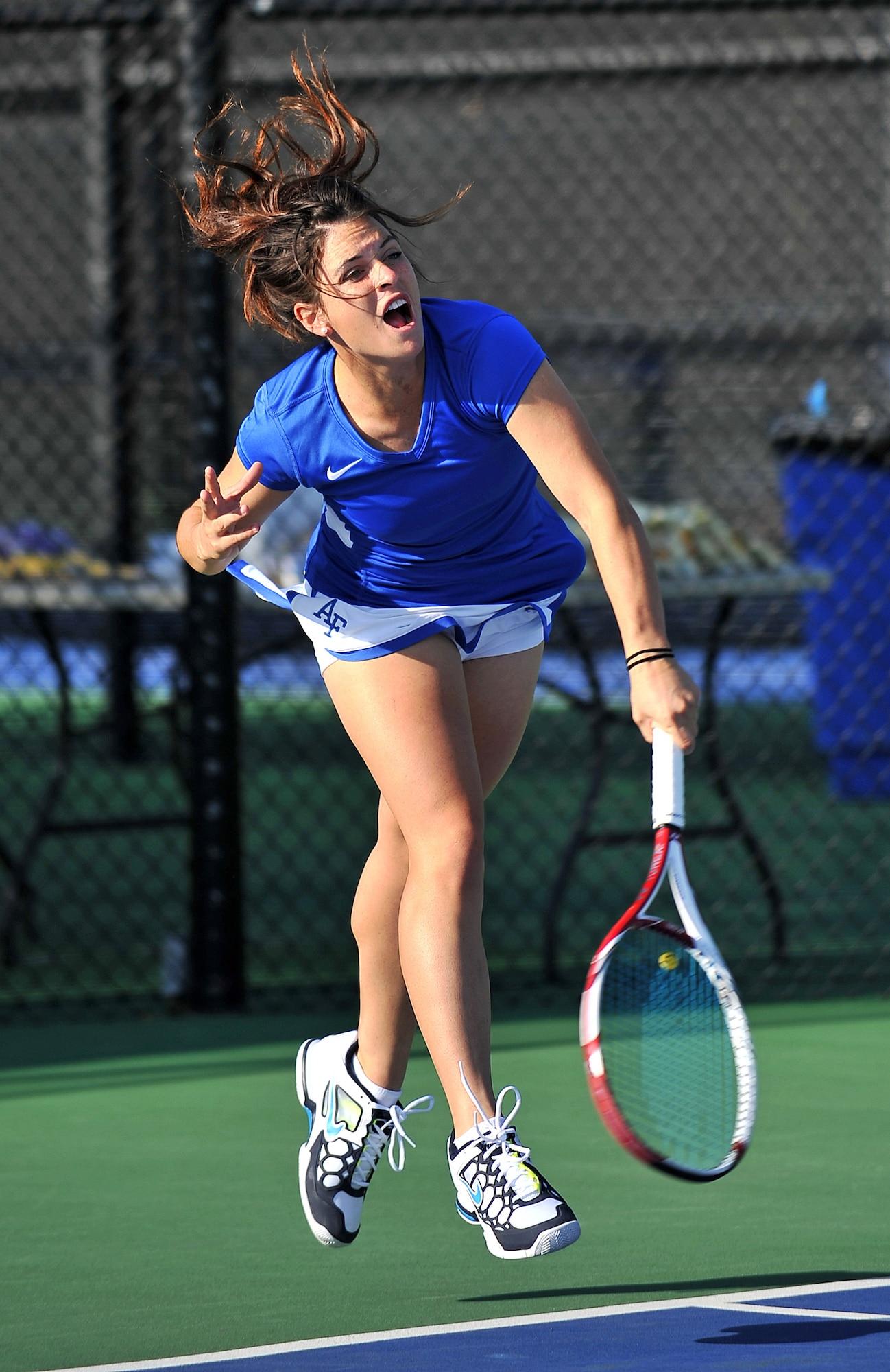
Tennis, a sport that combines athleticism, strategy, and precision, has captivated audiences for centuries From its humble beginnings as a lawn game played by French monks in the 12th century to its modern-day status as a global phenomenon, tennis has evolved into one of the most popular sports in the world Its rich history is filled with legendary players, iconic matches, and groundbreaking innovations
Brief history of tennis
The origins of tennis can be traced back to medieval Europe, where it was played by monks on monastery grounds The game was initially known as “jeu de paume,” meaning “game of palm” Players used their hands to hit a ball against a wall or over a net Over time, rackets were introduced to protect the players’ hands
In the 16th century, tennis gained popularity among French nobility and became known as “real tennis” or “royal tennis” It was considered an elite sport reserved for the upper class The rules and equipment underwent significant changes during this period
By the late 19th century, lawn tennis emerged as a more accessible version of the game Major Walter Clopton Wingfield is credited with inventing modern lawn tennis in 1873 when he patented a portable court and designed standardized rules
Importance of understanding the serve in tennis
The serve is arguably one of the most critical aspects of tennis It is not only how each point begins but also sets up the entire rally A well-executed serve can put pressure on opponents and dictate play from the start
Understanding various serving techniques such as flat serves, slice serves, kick serves, and topspin serves allows players to mix up their strategies and keep their opponents guessing Moreover, mastering the serve requires a combination of power, accuracy, and placement, making it a challenging skill to develop
By honing their serving skills, players can gain a competitive edge and increase their chances of holding their service games Additionally, a strong serve can be used as an offensive weapon to create opportunities for winning points or breaking opponents’ serves
Overview of the blog sections
In this blog, we will delve deeper into the world of tennis serves and explore various aspects related to this crucial shot The following sections will guide you through different elements of serving:
- The Basics: Here, we will cover the fundamental techniques and grips used in a tennis serve
- Serving Strategies: This section will discuss strategic considerations when serving, including tactics to maximize effectiveness
- Serve Training Tips: We will provide valuable tips on how to improve your serve through targeted practice drills and exercises
- Mental Game: Serving is not just about physicality; it also requires mental strength In this section, we will explore the psychological aspects of serving and offer strategies for staying focused under pressure
- Troubleshooting Common Issues: Serving can be challenging, even for experienced players Here, we will address common problems that arise during serves and suggest solutions to overcome them
Stay tuned as we take you on an exciting journey through all things related to tennis serves!
The Basic Tennis Serve Rules and Terminology

Definition of a serve in tennis
In the exciting sport of tennis, the serve is a crucial element that kickstarts every point It’s the player’s opportunity to launch the ball into play and gain an advantage over their opponent Whether you’re a beginner or a seasoned pro, understanding the rules and terminology surrounding the tennis serve is essential for mastering this fundamental skill
Tennis court layout and serving positions
To grasp the intricacies of the tennis serve, let’s first familiarize ourselves with the layout of a standard tennis court The court consists of two halves divided by a net, with each half further divided into service boxes and other designated areas
When it comes to serving, players stand behind their respective baselines, which are located at each end of the court Within these baselines lie two service boxes – one on either side – where serves must land for them to be considered valid
In single matches, players can choose to serve from either side of their baseline, but in doubles matches, there are specific serving positions that players must adhere to
Types of serves used in tennis
Now that we understand the basics of serving in tennis let’s dive into some common types of serves that players employ during matches:
-
The Flat Serve:
This is a powerful serve where players hit the ball directly over the net with minimal spin It allows for fast-paced shots that can catch opponents off guard -
The Slice Serve:
With this type of serve, players impart slice spin on the ball using an angled contact point The spin causes the ball to curve away from the opponent, making it challenging to return -
The Kick Serve:
A kick serve involves hitting the ball with topspin, causing it to bounce higher and kick off the court This can be a tricky serve for opponents to handle due to its unpredictable trajectory -
The Serve and Volley:
This serve is followed by an immediate rush towards the net, allowing players to take advantage of a weak return and quickly finish points at the net
These are just a few examples of serves in tennis Each type has its own unique purpose and can be employed strategically depending on the situation By mastering different types of serves, players can keep their opponents guessing and gain a competitive edge on the court
How Many Serves in Tennis: Understanding the Scoring System

Tennis, a sport known for its fast-paced action and strategic gameplay, has a unique scoring system that can sometimes confuse newcomers In order to fully appreciate the game, it’s crucial to understand how points are scored and how they contribute to winning matches
Points System in Tennis
In tennis, points are earned by winning rallies or exchanges of shots between players Each point starts with a serve, where one player hits the ball over the net into their opponent’s side of the court The rally continues until one player fails to return the ball successfully
To keep track of points, tennis uses a numerical system: love (0), 15, 30, 40 When a player wins their first point in a game, they have “15” The next point is “30,” followed by “40” If both players reach 40 points, it’s called deuce From there, players must win two consecutive points to win the game
A set consists of multiple games To win a set, you must be the first player to reach six games with at least a two-game advantage over your opponent In some cases, when sets are tied at six games apiece, a tiebreak is used to determine the winner
The match itself is won by taking sets Typically for men’s matches in Grand Slam events and Davis Cup ties played under ITF regulations, best-of-five sets format is used; whereas for women’s matches and most other men’s tournaments it is best-of-three sets format
Number of Serves per Game: Server’s Perspective
As an integral part of serving in tennis, each server has specific rights and responsibilities during gameplay From the server’s perspective, they are entitled to two serves per point This means that if the first serve goes into the net or out of bounds, the server has another chance to deliver a successful serve
However, if both serves fail to go in play (a double fault), the server loses the point Double faults can occur when a player fails to hit a valid serve on both attempts It is crucial for servers to balance power and accuracy to maximize their chances of winning points
Number of Serves per Game: Receiver’s Perspective
On the other side of the court, the receiver must be prepared for both serves from their opponent In singles matches, there is no rotation between receivers The same person receives all of their opponent’s serves throughout the match
In doubles matches, however, there is a rotation between receivers After every game, the receiving team switches positions so that each player takes turns receiving serves from different opponents
Tiebreak Rules
In some situations where sets are tied at six games apiece in tennis, tiebreak rules come into play A tiebreak is like a mini-game designed to determine who wins the set It involves players taking turns serving and receiving with specific scoring rules in place
The first player or team to reach seven points with at least a two-point lead wins the tiebreak and subsequently claims the set If necessary, multiple tiebreaks can be played until one player or team emerges as victorious
In conclusion,
To fully comprehend tennis and enjoy watching or playing it, understanding its scoring system is essential From earning points in rallies to accumulating games and sets towards winning matches – every aspect plays an important role in determining who comes out on top in this thrilling sport
Mastering Your Serve Game: Tips and Techniques
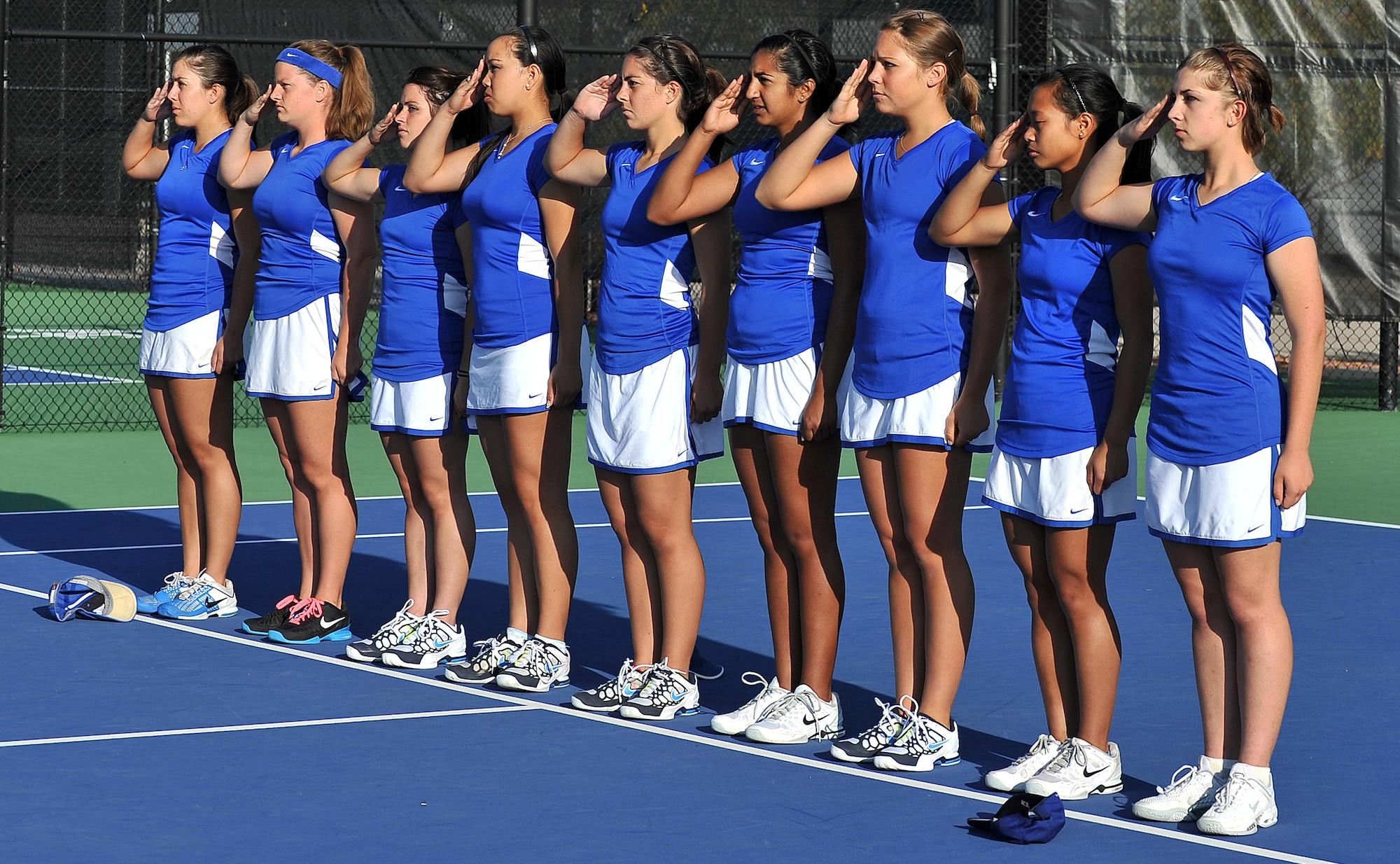
Preparation for an Effective Serve
When it comes to serving in tennis, physical conditioning and mental focus are key components of a successful game It’s important to train your body to be strong, agile, and flexible, as these attributes will enhance your serve power and accuracy Additionally, developing mental resilience and concentration will help you stay focused during crucial moments
Techniques for Better Serving
1 Grip Variations:
Your grip on the racket can greatly affect the outcome of your serve Experiment with different grip variations, such as the Continental grip or Eastern backhand grip, to find the one that feels most comfortable and allows you to generate maximum power
2 Ball Toss Consistency:
The consistency of your ball toss is crucial for a successful serve Practice tossing the ball consistently at the desired height and location every time This will enable you to make clean contact with the ball and maintain control over its trajectory
3 Serve Placement Strategies:
Incorporating strategic placement into your serves can give you a competitive edge Consider varying your serve placement by aiming for different areas of the service box or targeting specific weaknesses in your opponent’s game
Adapting Your Serve Based on Opponent
Adapting your serve based on your opponent’s weaknesses is a smart strategy that can give you an advantage on the court
– Exploiting Weaknesses:
Analyzing your opponent’s strengths and weaknesses can help you identify areas where their return may be vulnerable Tailor your serve to exploit these weaknesses, placing them under pressure right from the start
– Maintaining Unpredictability:
Keeping your opponent guessing is crucial when it comes to serving Incorporate variations in spin, speed, and placement to maintain unpredictability This will make it harder for your opponent to anticipate and effectively return your serve
By following these tips and techniques, you can master your serve game and become a formidable force on the tennis court Remember, practice makes perfect, so dedicate time to honing your skills and continuously improving your serve
Conclusion

In conclusion, mastering the serve in tennis is a crucial skill that can greatly impact a player’s performance on the court Throughout this article, we have explored various key points that highlight the significance of honing this technique
Summary of key points
First and foremost, we discussed the importance of proper technique and how it can enhance power, accuracy, and consistency in serving By understanding the mechanics behind a successful serve, players can effectively utilize their body movements to generate maximum force
Additionally, we emphasized the significance of practicing different types of serves such as flat serves, kick serves, and slice serves Each variation offers unique advantages and can be strategically employed during matches to keep opponents off balance
We also touched upon the role of mental focus and concentration in executing a successful serve Maintaining composure under pressure and visualizing a positive outcome can greatly improve performance when stepping up to the service line
Importance of mastering the serve
The serve acts as a player’s first opportunity to gain an advantage over their opponent A powerful and well-placed serve can set the tone for an entire match by forcing an immediate defensive response from the receiver
By mastering this fundamental aspect of tennis, players not only increase their chances of winning crucial points but also gain confidence in their overall game A strong serve provides a solid foundation for constructing effective strategies throughout a match
Encouragement for continued practice
While mastering the serve may require time and effort, it is important to remember that even small improvements can yield significant results on the court Consistent practice combined with feedback from coaches or trainers can help refine technique and overcome any obstacles along the way
So don’t get discouraged if progress is not immediate Keep practicing, experimenting with different approaches, and learning from both successes and failures With dedication and perseverance, you will undoubtedly see your serve evolve into a formidable weapon in your tennis arsenal
Now go out there and continue to work on mastering the serve The rewards will be well worth it when you step onto the court and confidently deliver powerful serves that leave your opponents in awe
Useful Links

Service Rules – Tennis Instructor Education & Certification
Tennis Rules Explained – The Basics of Tennis
Tennis Serving Rules 101
Guide to Tennis Serves: 4 Types of Tennis Serves – 2023
Tennis Serving Rules in a few steps – Tennisario
An Interval Serve Program for Elite Tennis – Research …
3 Types of Tennis Serves: Flat, Slice, and Kick Instruction
Serve rules and tactics | Fitness
Serving practice: how many serves?
How Many Let Serves Are Allowed in Tennis
Table Tennis rules explained: 11 frequently asked questions
Summary of Tennis Rules
11 Steps To Hit A Perfect Tennis Serve
Official Rules of Table Tennis
The Tennis Ball Toss: Breaking Down this Critical Aspect …
How Many Games Does A Set Consist Of In Tennis?
Breaking the Rules: letting go of the let serve
Men’s Tennis Serve Statistics May Surprise You
How to Serve in Tennis: 6-Step Guide
Do You Alternate Serves In Tennis?

